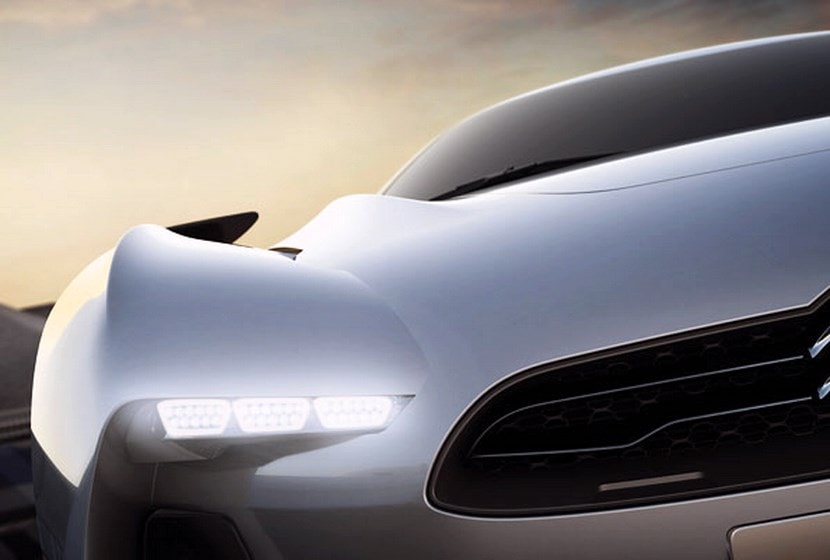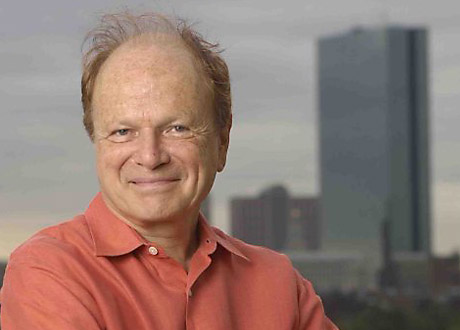Rethinking mobility could be an avenue for innovation in the face of the crisis in the French automotive industry, and in particular, the crisis that the PSA Group is going through today..
In the image of the cluster Vehicle of the Future, labellisé depuis 2005 pôle de compétitivité, ne faudrait-il pas inventer des solutions pour les véhicules et les mobilités du futur dans une perspective de développement durable au service du territoire ?
Pour faire un état des lieux de la situation, rappelons-nous tout d’abord la conférence en 2009 de Jean-Martin Foltz (ancien PDG de PSA Peugeot-Citroën) qui posait la question suivante « Les crises vont-elles accélérer les mutations technologiques dans l’automobile ? ».
At this conference, Jean-Martin Folz recalled the context in which the future of the automotive industry lies: economic and financial crisis, environmental crisis (climate change), energy crisis (scarcity of fossil hydrocarbon resources). Of course, the impacts on this industry concern the demand for transportation in general, the demand for individual versus collective transportation and the choice of automobile among other means of individual transportation. "For my part, I am convinced that the automobile still has a long life ahead of it, but it will have to be cheaper and consume less," Jean-Martin Folz points out. A few figures: today's global car fleet totals around 700 million vehicles, with the prospect of strong growth in the coming years given demand in emerging countries.
Technologically speaking, the basic principle of today's car is not much different from what it was at the beginning of the 20th century, as the former CEO of PSA points out: it is, very schematically, a converter of energy stored on board into mechanical energy. Its evolution requires us to answer three major questions: what are the mechanical energy requirements of a vehicle? Which converter should be chosen? What type of energy storage should be used on board the car? In terms of converters, two paths have always competed, one using a combustion engine, the other an electric motor. However, the internal combustion engine won out at the beginning of the 20th century, despite its two serious shortcomings (low efficiency and emission of polluting or greenhouse gases), for one simple reason: the problem of on-board storage of electrical energy has never been solved and, for the time being, the fuel cell route remains very hypothetical.
Quelles sont à ce jour les solutions disponibles ? L’adoption du moteur électrique suppose donc de régler le problème du stockage, mais aussi celui du temps de rechargement des batteries (aujourd’hui encore rédhibitoire). La voie d’innovation la plus probable se situe au niveau des voitures hybrides rechargeables (à la fois par le moteur thermique et sur secteur), indique Jean-Martin Folz.
"But the internal combustion engine with liquid fuel still seems to me to have huge advantages. Barring a revolution in the storage of electrochemical energy, I don't see any change in the short or medium term. I remain convinced that most cars will still run tomorrow and the day after tomorrow with a combustion engine (possibly combined with an electric motor in a hybrid vehicle) powered by liquid hydrocarbons".
Developments should therefore continue in the field of energy savings, car weight reduction, safety, reliability, etc., but no real technological breakthrough is expected in the near future. (Source: D. Chouchan /academie-technologies.fr)
Why is PSA in crisis?
In order to keep the factories running, you need customers. But car sales are falling in Europe. This is what motivates PSA's social plan. In the first half of 2012, the group will post a loss of 700 million euros in its automotive sector. An erroneous analysis according to the trade unions who believe that the company continues to earn money. According to the specialists of the automotive sector, the problem of PSA is not only the sluggishness of the European automotive market but above all strategic errors and a bad positioning.
For example, German manufacturers manufacture the high-end vehicles that generate the highest margins at home and relocate the production of the smaller models that are much less profitable when they are manufactured on German soil. The previous head of the PSA group also erred on the side of optimism by setting the target of producing 4 million cars a year.
As a result, the group has overcapacities of 25% in Europe, particularly in the small vehicle segment. PSA Peugeot Citroën does not have a growth niche like the hybrid cars of Japan's Toyota or Renault's low-cost cars, which contribute strongly to its profits.
A quick reminder: the automotive industry employs 10% of the working population in France, accounts for 1% of the gross domestic product and 15% of research and development expenditure.
The French automobile industry is facing problems of competitiveness and the "steady erosion" of vehicle production in France. More and more small models are being produced in countries where labour costs are lower, such as Central and Eastern European countries or Turkey.
"Today, if we want to keep our automotive industry, we must help it finance itself and help it to ensure its transformation, to find new markets and to be more competitive," said a former minister in 2011.
 One solution: leverage technology
One solution: leverage technology
Finding solutions to a way out of the crisis remains a difficult equation to solve.
According to an automotive industry expert, Rémi Cornubert of the Cabinet Olivier Wyman : « A court terme, il faut laisser les constructeurs restructurer leur outil de production. Et il faut les aider à restructurer. A plus long terme, les constructeurs doivent être plus à l’écoute des clients. Ils doivent leur proposer des produits au juste nécessaire avec plus de services (ce qui serait un moyen de créer des emplois localement). Ils doivent aussi intégrer le fait que le budget des clients est de plus en plus sous contrainte.
Finally, we must focus on technology, research programmes and training to make the automotive sector more attractive. In France, manufacturing is not perceived as something noble, unlike in Germany or Japan. It is difficult to devote as many resources to it as to design or to the more noble engineering and design professions. The consequence is that some innovations are sometimes taken over by foreign competitors who know how to industrialize technologies invented in France (case of common rail injection)"
 Create novelties?
Create novelties?
Is the creation of new brands to further segment the market the solution? It seems to be a line of thought at Renault. (Initiale Paris, Alpine). PSA has already launched (DS) at the risk of cannibalizing its other models due to the lack of dedicated distribution networks.
The novelty, good for image and marketing, is not all. Rather than creating new ranges, generalist manufacturers should be concerned with being profitable on existing ranges. Here again, the Credit Suisse estimate that half of the vehicles sold in Europe are sold at a loss. Hence the importance of adjusting capacity. But beyond this logic of attrition, the important thing is for manufacturers to continue to innovate and regain leadership in technologies where certain emerging countries (China) are pushing their pawns very quickly (electric vehicles, for example).
In such a context, the European Union undoubtedly has a role to play. How can it do so? By developing a greater capacity to anticipate and accompany restructuring. This is an observation that also applies to France. A country where successive governments have been content to support restructuring plans rather than trying to anticipate difficulties (no doubt due to a loss of skills and a lack of knowledge of the national industrial fabric).
 Rethinking tomorrow's mobility?
Rethinking tomorrow's mobility?
In the sixties, people used to say: "the city must adapt to the automobile"! Today, in order to rethink mobility, we need to rethink the street, the city that has changed as society has evolved (internet, working from home, changing pace of working life, shorter working hours, etc.).
« En 2030, la circulation dans les mégalopoles sera entièrement saturée », assurait dernièrement Chris Borroni-Bird, le directeur des technologies avancées chez General Motors. Lors de la dernière exposition universelle à Shanghai, le constructeur a dévoilé trois prototypes de voitures urbaines censées répondre à ce défi. D’une autonomie de 40 km environ, ces prototypes sont le fruit de la collaboration entre GM et son partenaire chinois Shanghai Automotive Industry Corporation (SAIC). Les « EN-V » pourront communiquer entre eux, s’arrêter automatiquement lorsqu’un piéton traverse la rue et se garer dans une place de parking trois fois plus petite qu’une voiture normale. Date de sortie estimée : pas avant 2030.
Mais nous allons vers un nouvel usage de l’automobile : les technologies évoluent, les comportements et les usages doivent évoluer avec. Repenser la mobilité et modifier l’usage des transports. Plus que la technologie équipant nos voitures, c’est notre façon de se déplacer qui va changer. Cela passe par exemple par le changement de réflexe : ne pas prendre systématiquement notre voiture pour nos déplacements en ville et pour des courts trajets (ce qui est la solution la moins rapide et la plus chère avec 30 centimes d’euros du kilomètre).
It also means acquiring new reflexes during our long journeys: think train, carpooling, car sharing, carbon offsetting as well:
– Covoiturage : plusieurs personnes partagent l’utilisation d’un véhicule pour effectuer tout ou partie d’un trajet commun. Le chauffeur, non professionnel, peut être indemnisé (frais de carburant, péage, amortissement du véhicule…) Le covoiturage est particulièrement adapté dans les zones rurales et périurbaines où les transports collectifs sont peu développés. Sites dédiés : http://www.covoiturage.fr/ , http://www.co-voiturage.fr/, http://www.covoiturage-france.fr/, http://www.tribu-covoiturage.com/, http://www.vadrouille-covoiturage.com/covoiturage-france/,…
– Autopartage : service de mise à disposition de voitures pour une courte durée au profit d’utilisateurs abonnés (services accessibles 24h/24 et 7j/7). L’autopartage permet d’effectuer des trajets qui n’auraient pas pu être faits autrement qu’en voiture (pas de transports publics). Après le succès des vélos en partage (Vélib’), et le système analogue -Autolib’- en développement dans des grandes villes (Paris et sa banlieue, Lyon) pour de petites voitures électriques en libre service, louées pour de courtes durées. Elles permettront de relier des lignes de transports en commun, d’atteindre des lieux de rendez vous mal desservis, ou de transporter des objets trop volumineux en vélo. Des prototypes futuristes voient le jour sur ce mode de concept : the Mobi du designer indien Ajinkya Yadav ou le Angel Sanchez Vargas' prototype or that of the Japanese designer Daisuke Iguchi.
– Le grand mix des transports : l’intermodalité. Les spécialistes l’appellent l’intermodalité ou la multimodalité. C’est l’art de faire un cocktail de transports : prendre un bus, un train et rentrer à pied de la gare, aller en vélo à la gare et pouvoir le transporter dans le train pour l’enfourcher à l’arrivée. Les combinaisons sont nombreuses.
 Aujourd’hui, beaucoup de personnes utilisent déjà cette intermodalité des transports (notamment les personnes habitant en banlieue parisienne). Ce qui va évoluer demain, ce sont les modes de transport qui seront mieux adaptés et les technologies qui permettront de pouvoir combiner plus facilement différents modes de transport.
Aujourd’hui, beaucoup de personnes utilisent déjà cette intermodalité des transports (notamment les personnes habitant en banlieue parisienne). Ce qui va évoluer demain, ce sont les modes de transport qui seront mieux adaptés et les technologies qui permettront de pouvoir combiner plus facilement différents modes de transport.
– La mobilité 2.0 : l’informatique au service de la mobilité qui développe des solutions afin de favoriser l’accès aux données qui nous permettront d’adapter nos déplacements en fonction de critères donnés. Il existe déjà des applications permettant de savoir quand passera le prochain bus depuis son ordinateur ou depuis son portable.
Tomorrow, from your mobile phone, applications connected to several databases will offer you instant access to the most efficient routes, combining several modes of transport, including, if you wish, borrowing a bicycle from a network of shared cars, or reserving a seat on a train or in a rental car if necessary...
These applications can also make it easier to meet people, by telling us if a friend is on the next train or on the next...
- Imagining new forms of transport: imagination has no limits! Depending on the location, original and adapted modes of transport can be set up: collective taxis or buses on demand, run-of-the-mill buses, water bus, Auto-Tram, téléphérique dans les villes en pente, magnetic train, Motorbike and also individually propelled vehicles such as segways or electric bicycles (http://velobuc.free.fr/vae.html). Dans les pays nordiques, beaucoup de solutions sont imaginées, et il n’est pas rare de voir dans la rue des parents transportant à vélo leurs enfants dans des remorques spéciales.
New industrial players
De nouveaux acteurs peuvent rentrer et modifier en profondeur le paysage de l’industrie automobile. Ce n’est pas Bell Telephone Company qui a invernté le smartphone ! Ce n’est pas IBM qui a inventé l’ordinateur personnel ! De nouveaux entrants peuvent émerger dans l’envirronnement automobile et apporter des solutions radicalement différentes. La Google's driverless car is certainly a first step. The future of the auto industry may not come through the auto industry as it exists today .
Even if today many factors are calling into question the supremacy of the private car in our travel (depletion of fossil resources, rising fuel prices, tolls, etc.), the car still plays an important role in our lifestyles, particularly through the social status it confers on us. This is particularly the case in emerging countries, such as China, where owning a car is more a question of status than of travel.
Thus, in order to maintain mobility, which is necessary in our society, the automobile object, the perception and use of it by individuals must evolve to allow this industry to reinvent itself, to really innovate.
{Jacuzzi on}












